Advance Informatics Peer Review: Evaluating Healthcare Applications
VerifiedAdded on 2021/04/21
|5
|910
|23
Discussion Board Post
AI Summary
This is a peer review post on advance informatics, focusing on a discussion of healthcare applications, particularly non-pharmacological electronic health records (EHRs). The author engages with a peer's review, addressing questions about consumer health connectivity tools like period tracker apps and What to Expect, while also raising concerns about their reliability and potential conflicts with healthcare expert advice. The post emphasizes the importance of nursing professionals in promoting health literacy and critically evaluating such applications, suggesting that while these tools can be beneficial, they should not replace professional medical advice. The discussion also covers the integration of taxonomical vocabularies into EHRs and argues that this may not benefit patients with low health literacy. The author concludes by advocating for increased awareness among nursing professionals regarding the potential impact of non-pharmacological applications on public health.
1 out of 5
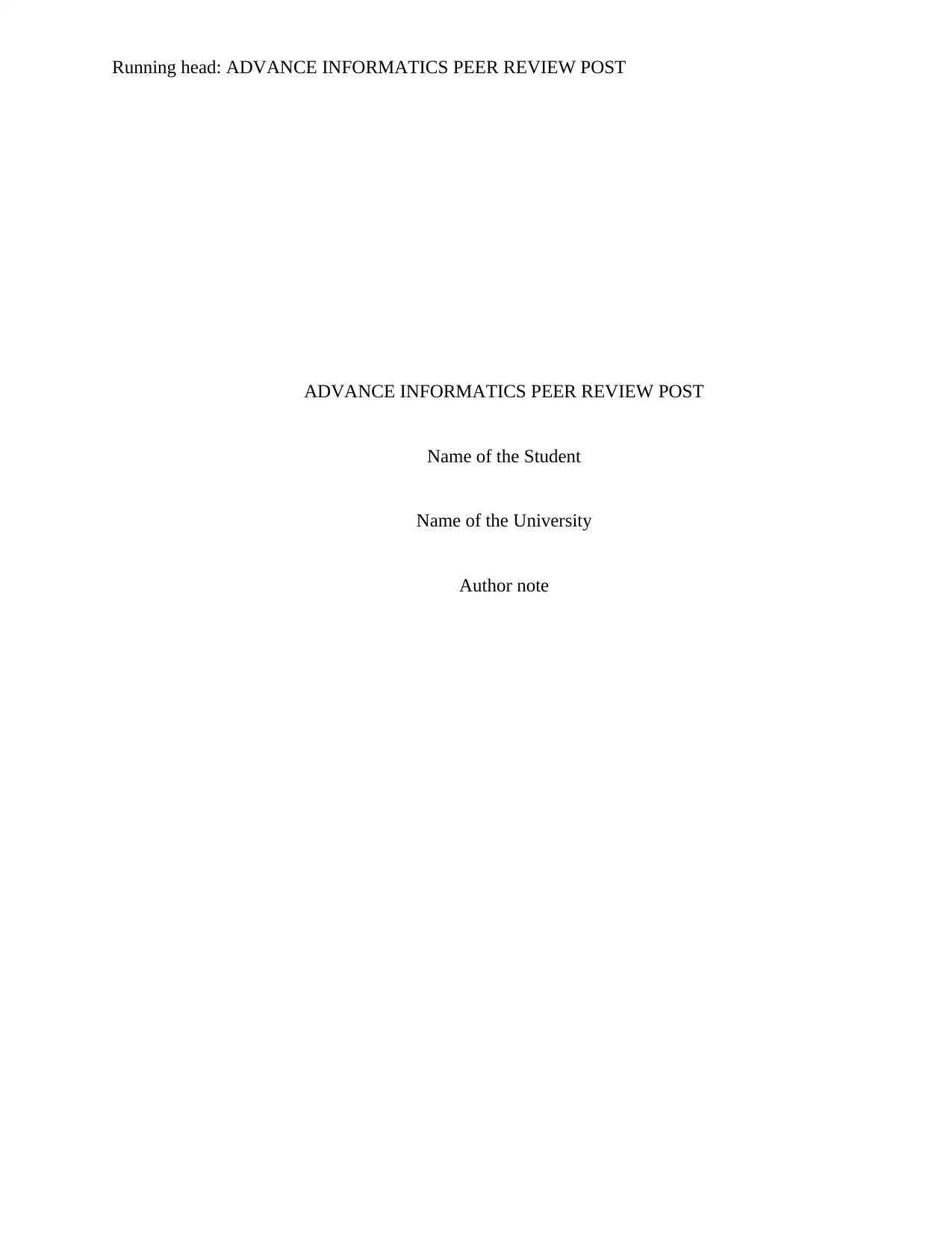
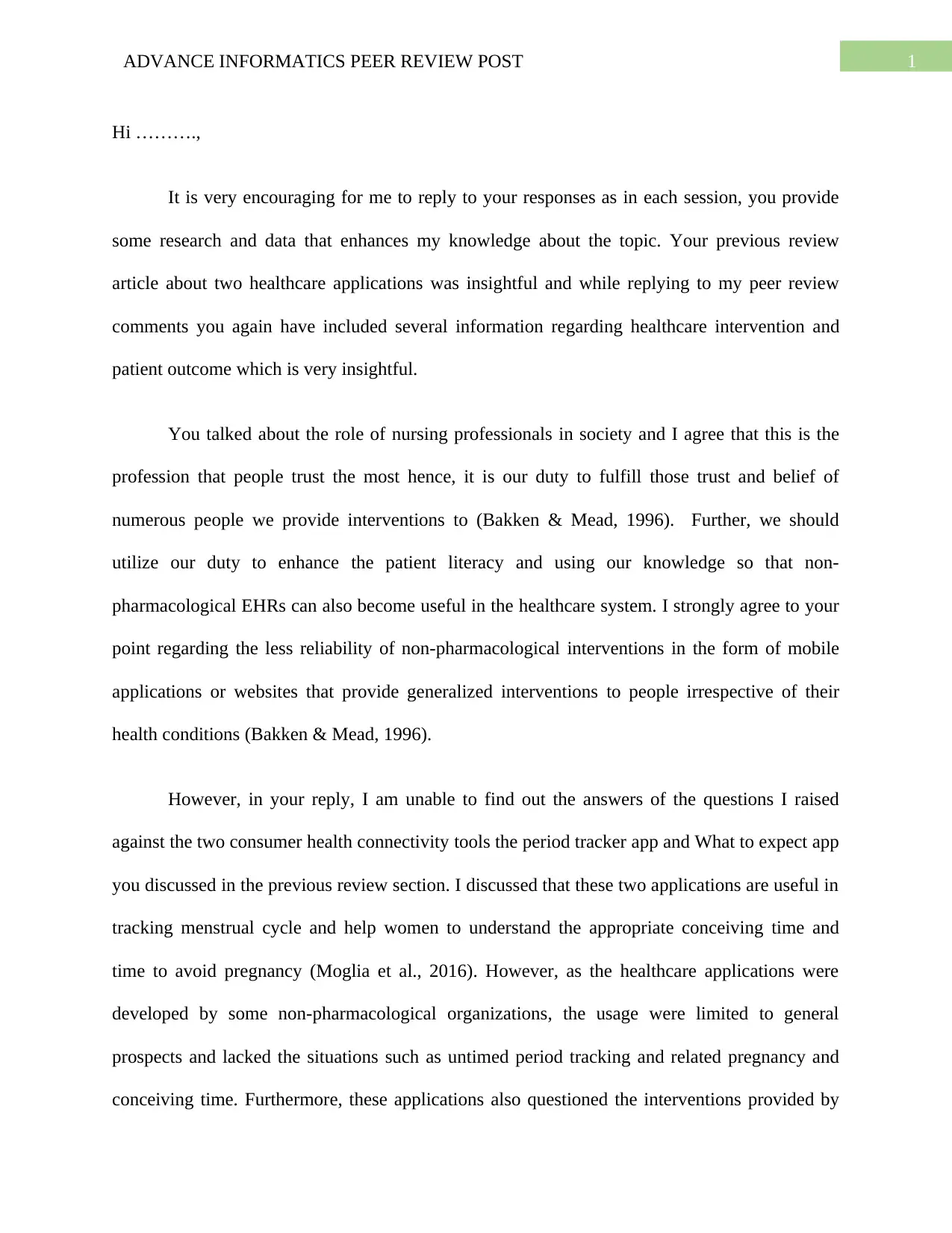
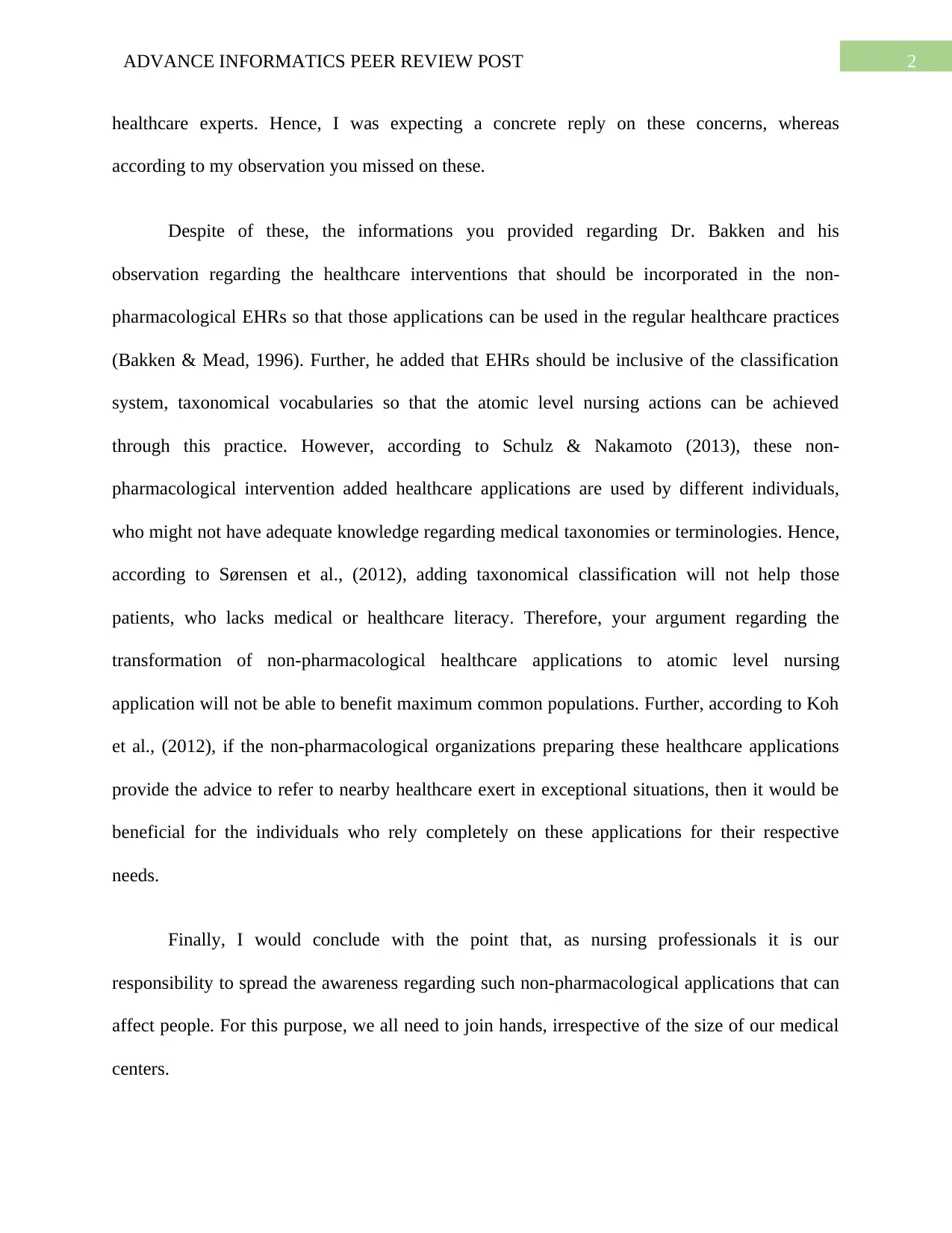

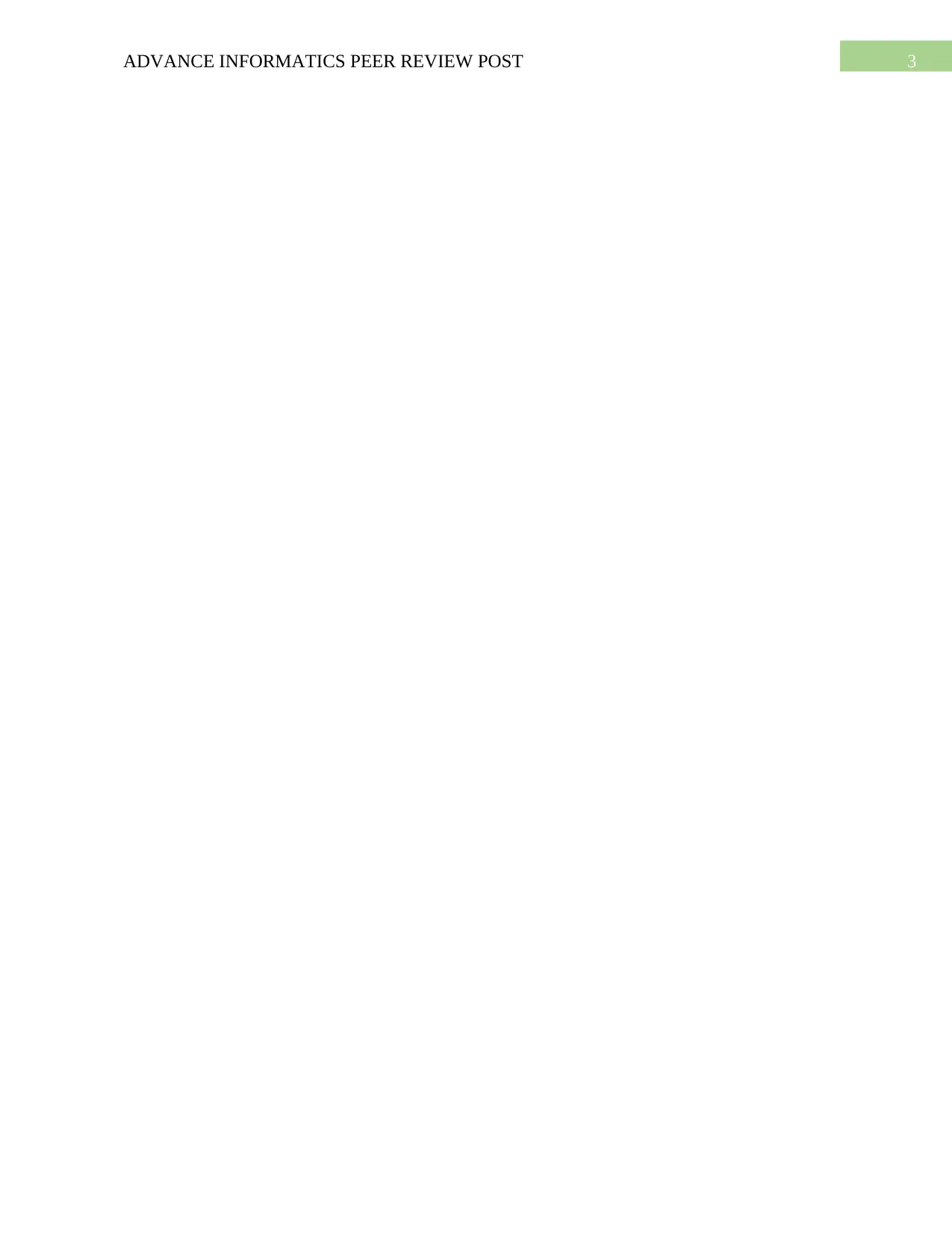
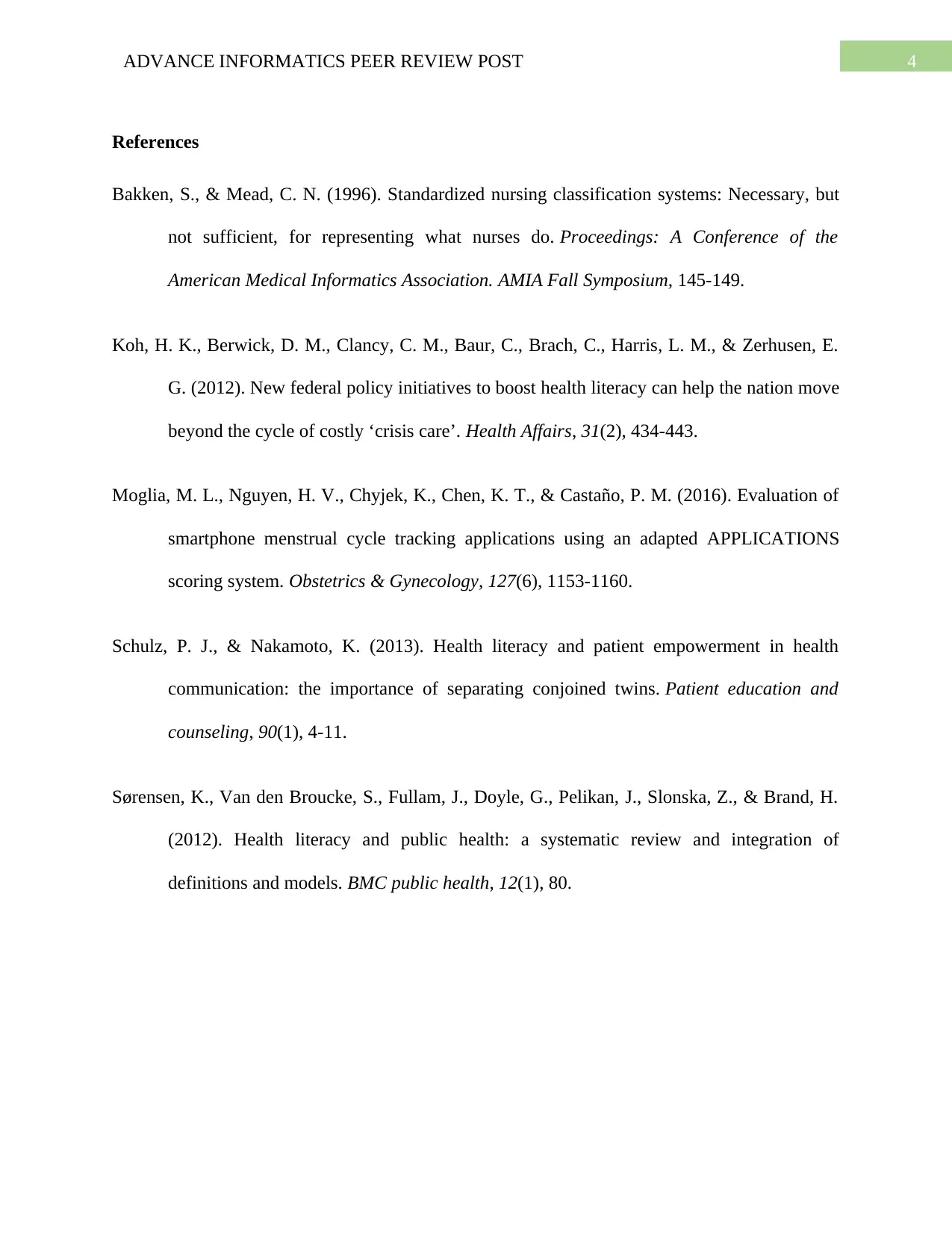

![[object Object]](/_next/static/media/star-bottom.7253800d.svg)